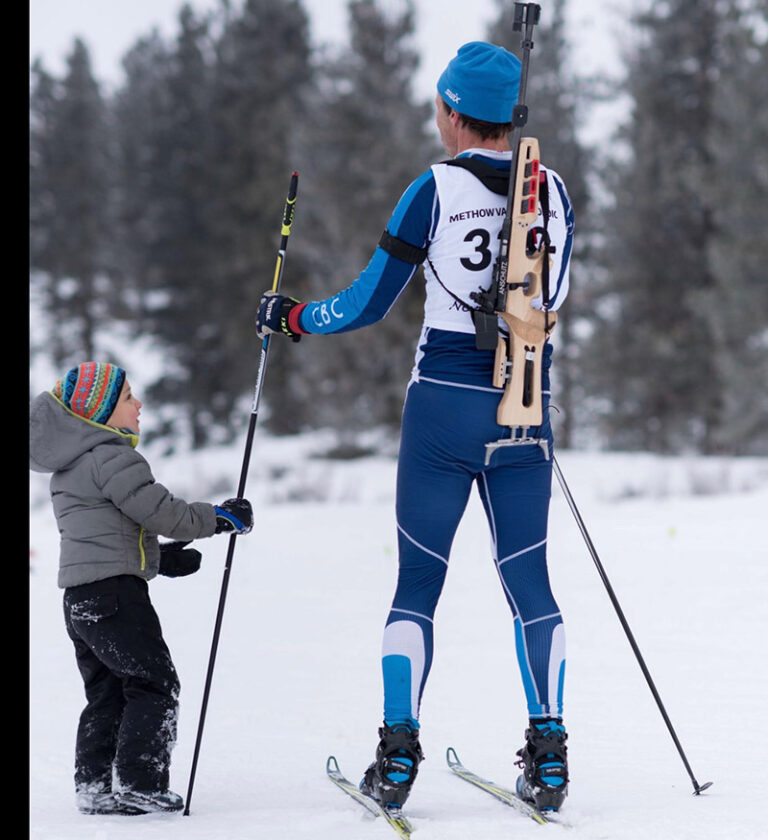Alpine Bindings
Brad Naccarato spent 3 seasons in Colorado as a certified alpine skiing instructor and has a combined 10 years of ski retail experience here in the Inland Northwest. Next month, look for Brad’s advice on buying new alpine ski boots.
Last month, I offered my advice on buying new alpine skis. Now we’re going to take a look at their counterpart: bindings. Skis are pretty useless without something that binds you to them. Although bindings get a lot less marketing hype, their value should never be overlooked when building your ski/binding system. Bindings are the performance link between your boots and your skis. While bindings are designed to “bind” you to the ski, they also release you from the ski when pressure exerted on them exceeds the selected release settings. If you’ve ever “yardsaled” it on an open groomer, with your skis scattered everywhere with your face in the snow but your knees still intact, then you’ve gained first-hand knowledge of the value of bindings.
What are these funky rails under the bindings?
Alpine bindings come in two flavors – integrated and traditional. Integrated bindings are part of a system where the ski is specifically matched to a binding with a mounting interface that usually does not require drilling holes. These interface systems utilize rails/ pins and various gadgets that secure the binding to the ski. Traditional bindings are mounted with screws drilled directly into the ski and can be matched to most any non-integrated/flat-top ski.
So which binding type do I choose?
Today’s popular integrated systems simplify the decision-making process for some by offering a one-size fits most option. Whether one is better than the other from a performance standpoint is a debatable topic. For the most part, the choice is based on your own personal preferences.
Regardless of what you choose, it’s critical that you know what your numeric release settings (DIN) are. Ask the sales rep to help you determine this. If a binding has a release range of 3-10, you want your values to be somewhere in the middle of that range to achieve the best performance from your binding.
It’s also important to make sure that your bindings are compatible with your boots. If you’re using alpine boots, this should be a non-issue. However, if you’re using certain types of backcountry/touring boots, you may run into some compatibility issues. Only a ski shop tech can tell you for sure – so don’t try to make this call yourself.
Why do the binding brakes come in different widths?
Skis are trending more toward wider waists. You should be certain that the binding you choose has a brake that will accommodate your ski’s width. In some instances you can find binding manufacturers that will offer up to 3 sizes of brake widths for a given model. This is not an issue with integrated systems as the brakes are matched with the ski.
Why can’t I just mount the bindings myself?
Please don’t even consider this. They may be flashy with all sorts of performance gizmos – but your bindings are a safety device first and foremost. If they are incorrectly mounted and/or your DIN settings are not properly adjusted, the results could be deadly in the event of a bad fall. You owe it to your own body and those bodies skiing around you to get them properly mounted by a certified ski shop professional.
I always see killer deals on used bindings – why not save some extra cash?
As a way to better ensure ski binding safety and performance, binding manufacturers create an “indemnification list” every winter. Manufacturers will indemnify shops in the event of a skier injury after the shop services or mounts their bindings, so long as they are on the current indemnification list. Every winter the list is revised to remove older bindings (typically 8-10 years old). If you buy an older used binding that has dropped off the list, most shops will decline to perform any work on it as they will then be liable instead of the manufacturer if you are injured and file a lawsuit relative to binding malfunction.













